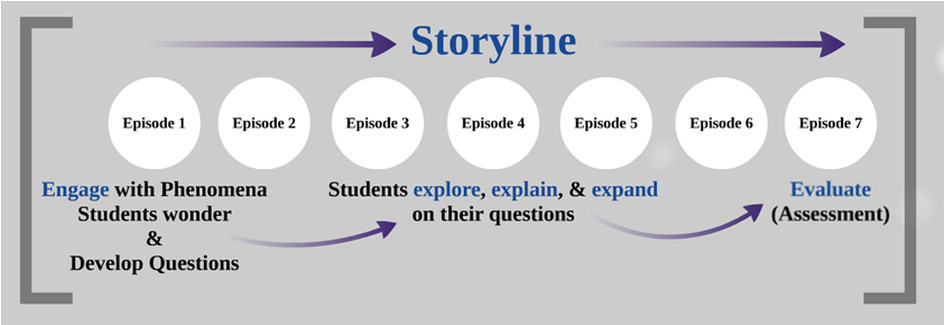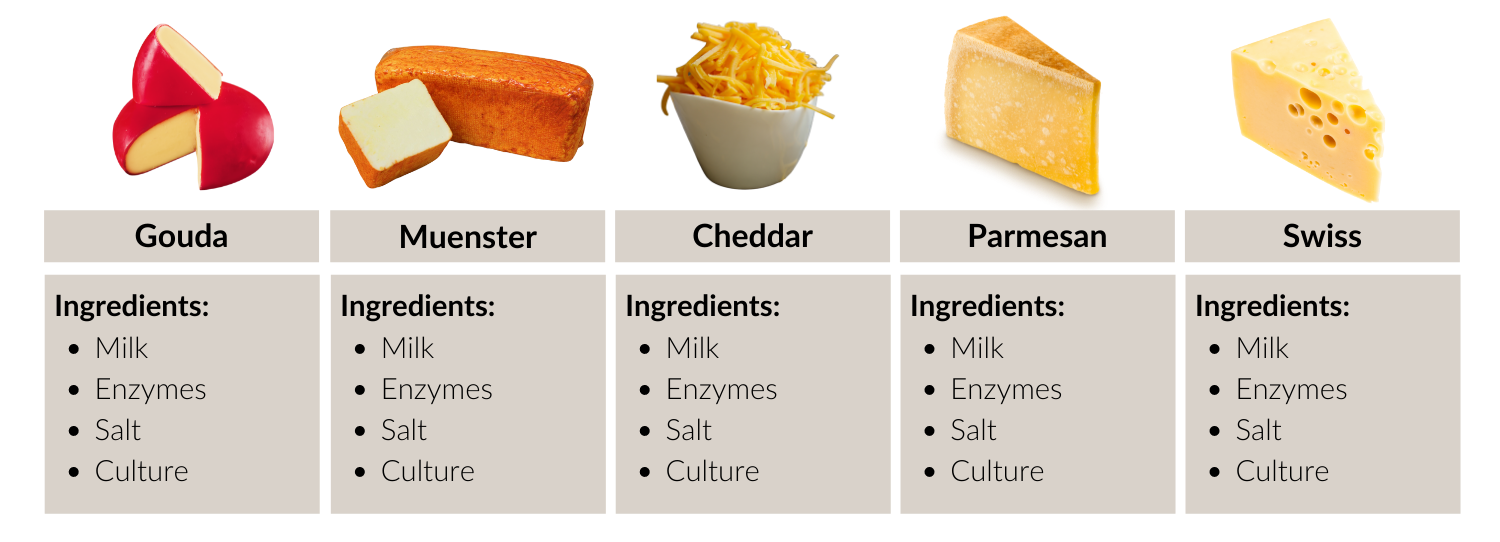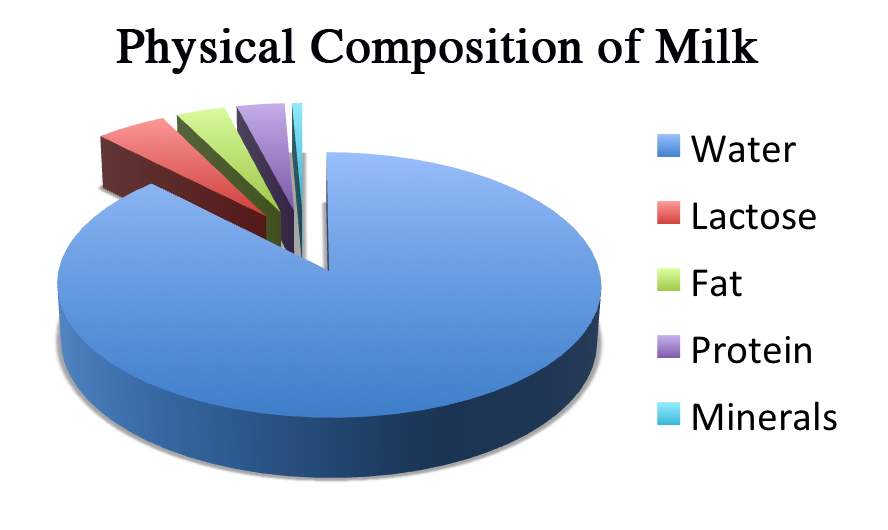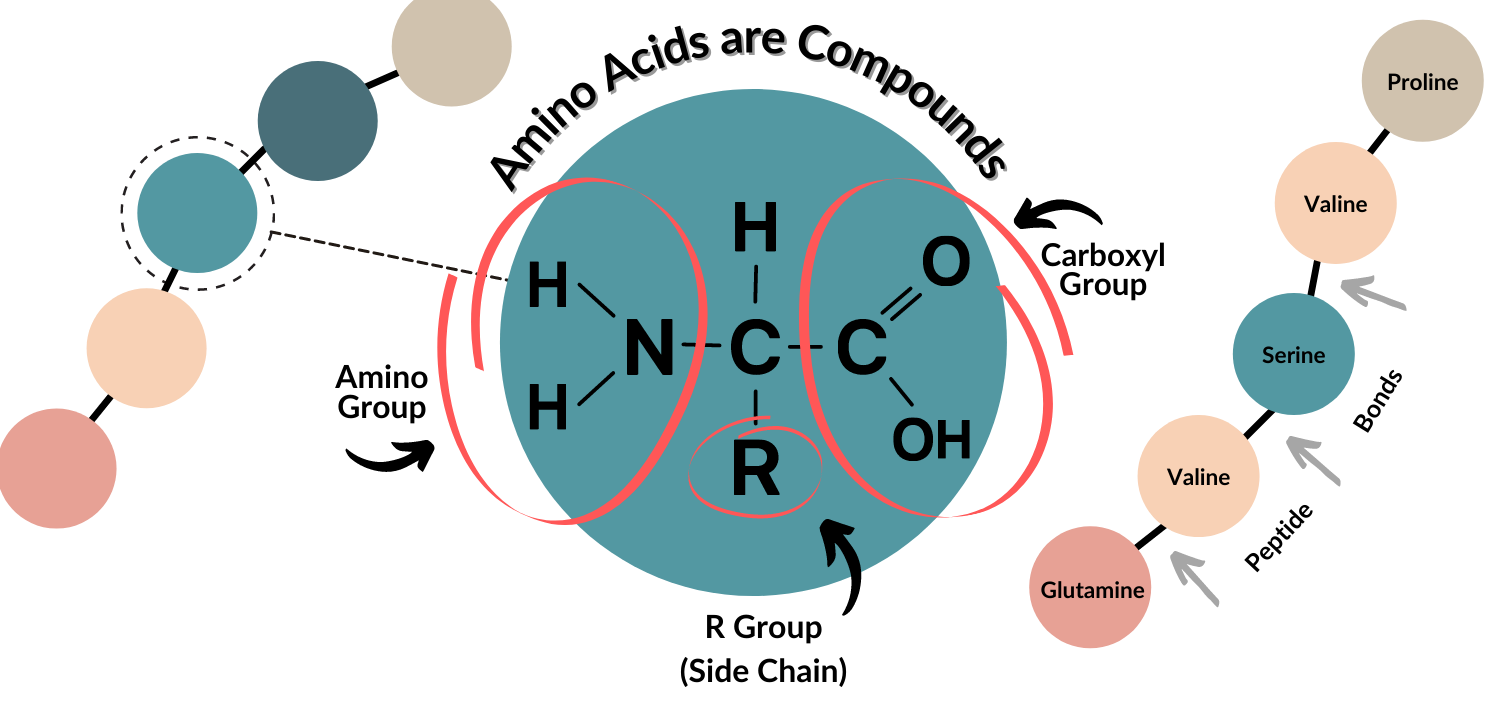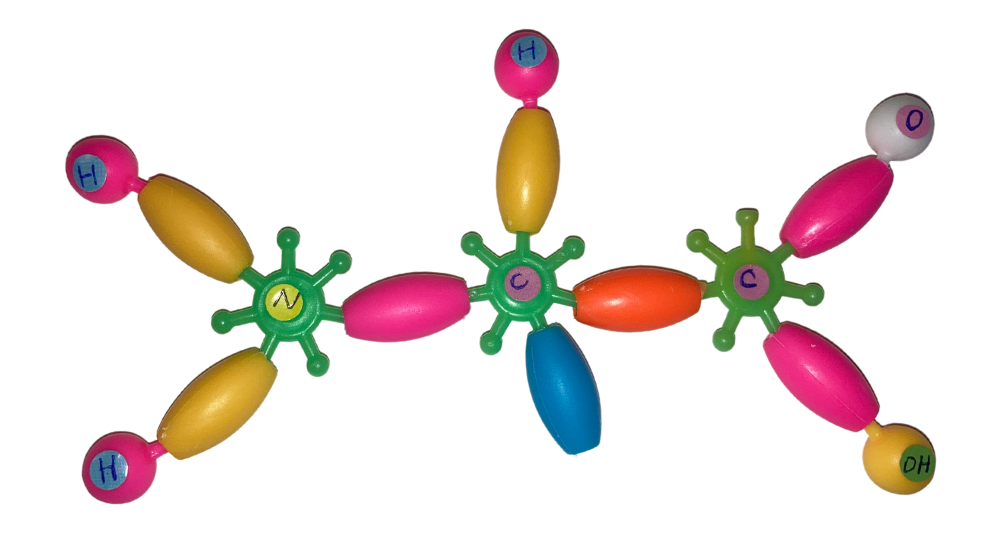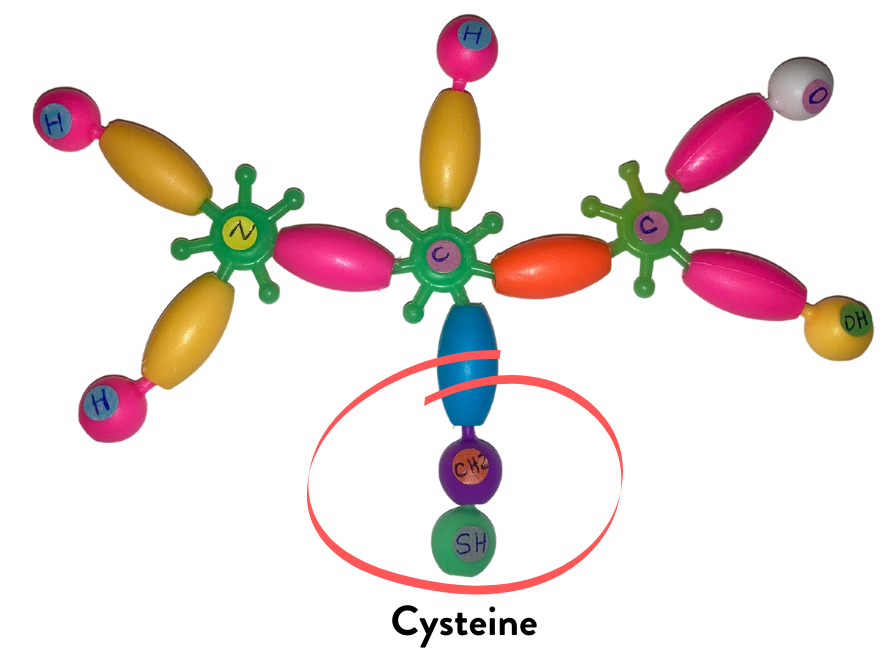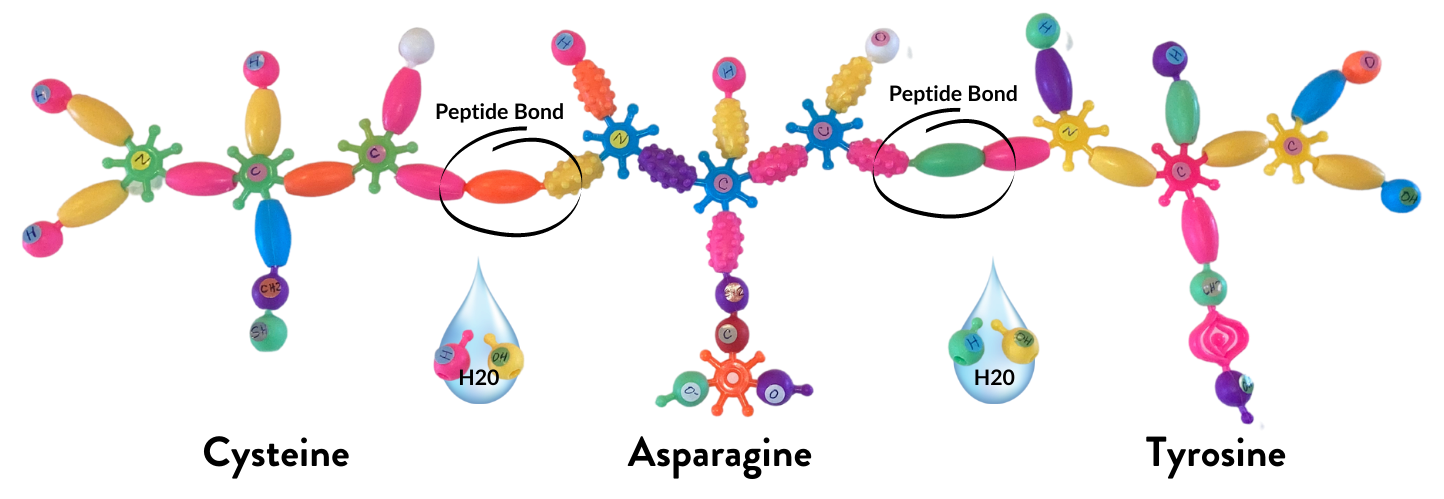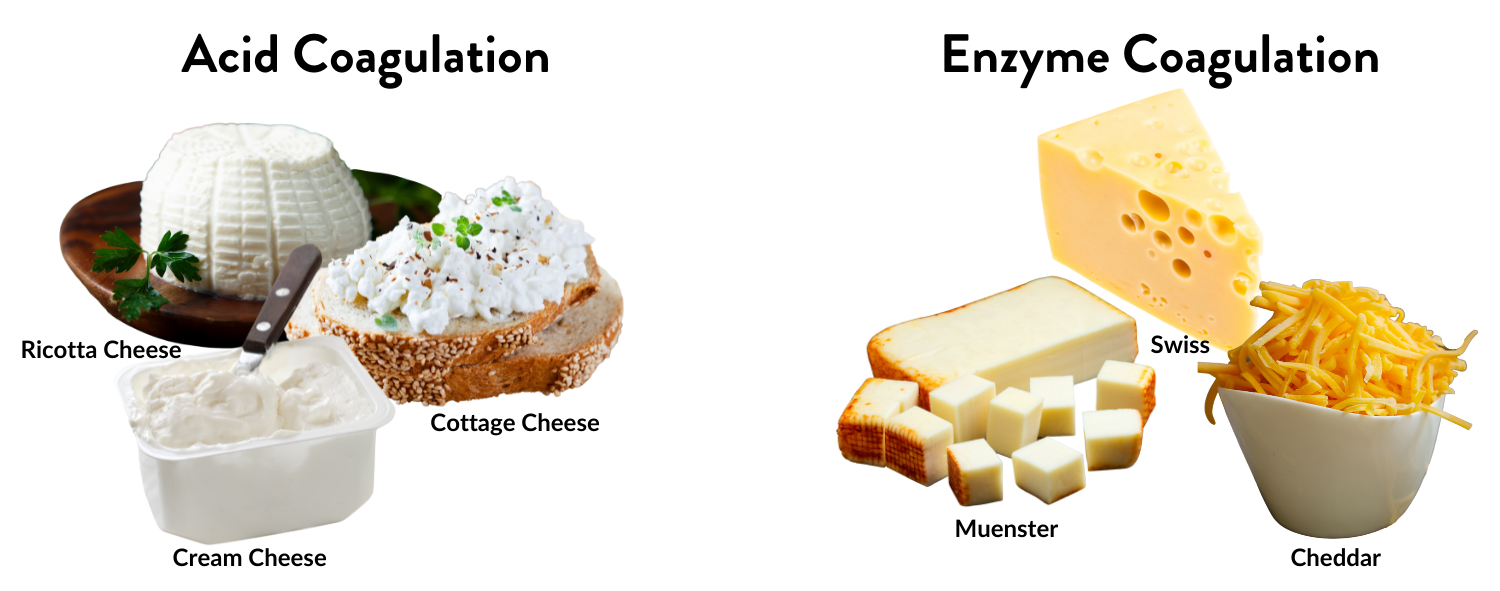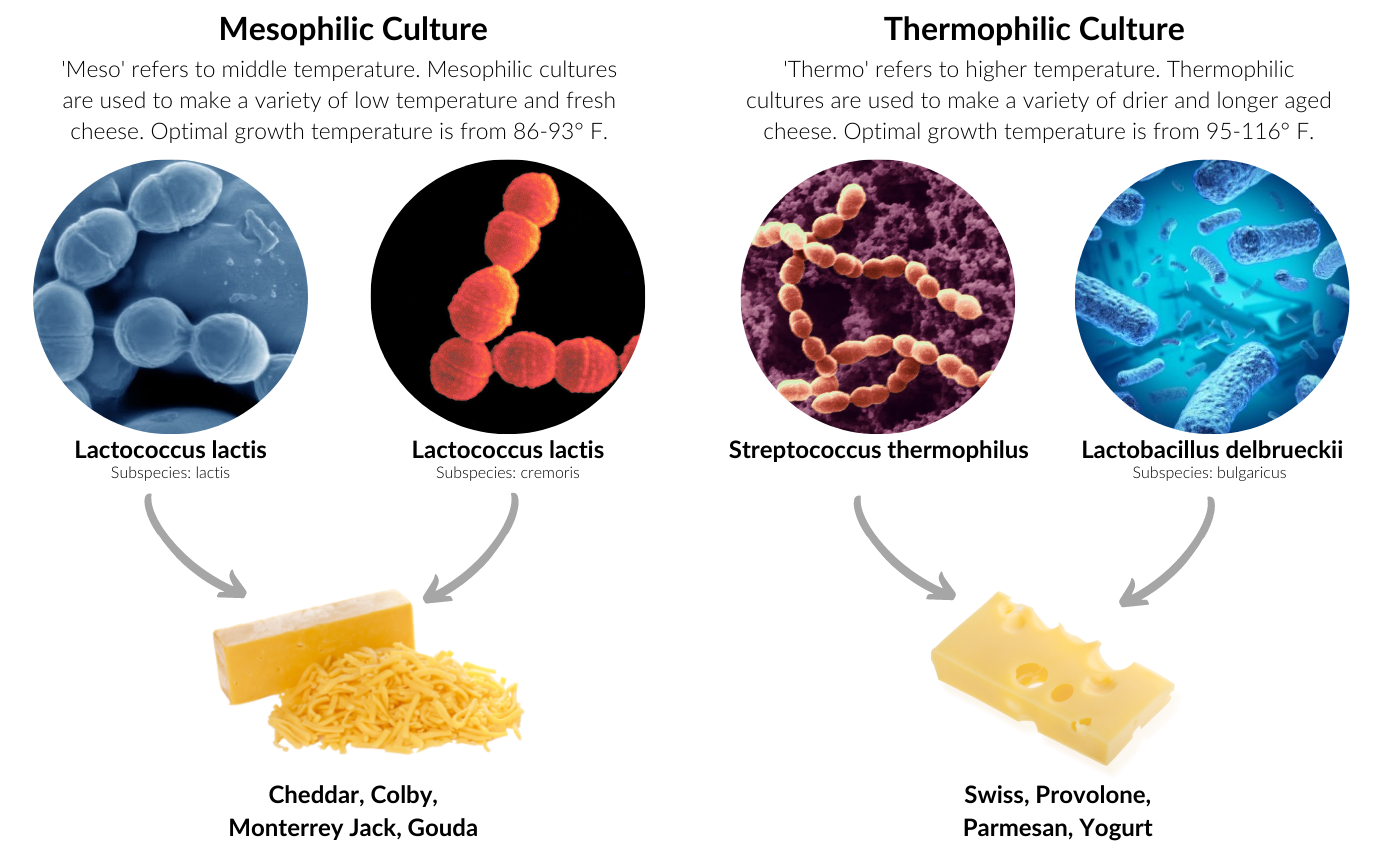Enzymes and Bacteria are Whey Cool!
Students study the science of amino acids, proteins, enzymes, and beneficial bacteria to explore the phenomena, "Why does each variety of cheese taste different when the ingredients are the same?"
Background
Lesson Activities
Recommended Companion Resources
Credits
Author
Andrea Gardner and Rashel Clark | National Center for Agricultural Literacy (NCAL)
Acknowledgements
Phenomenon chart adapted from work by Susan German.
German, S. (2017, December). Creating conceptual storylines. Science Scope, 41(4), 26-28.
German, S. (2018, January). The steps of a conceptual storyline. Science Scope, 41(5), 32-34.
Sources
- Advanced Nutrition and Human Metabolism. Gropper and Smith. 2013
- https://nationalhistoriccheesemakingcenter.org/history-of-cheese/
- Foods Experimental Perspectives. 7th edition. Margaret McWilliams
- https://nationalhistoriccheesemakingcenter.org/history-of-cheese/
- Say Cheese! A Kid's Guide to Cheese Making. Ricki Carroll and Sarah Carroll
- https://www.idfa.org/history-of-cheese
Standards
Texas Content Area Standards
-
World Geography Studies: 113.43.d.21
Social studies skills. The student applies critical-thinking skills to organize and use information acquired through established research methodologies from a variety of valid sources, including technology. The student is expected to:
- World Geography Studies: 113.43.d.21.D: analyze information by sequencing, categorizing, identifying cause-and-effect relationships, comparing, contrasting, finding the main idea, summarizing, making generalizations and predictions, drawing inferences and conclusions, and developing connections over time
- World Geography Studies: 113.43.d.21.F: formulate and communicate visually, orally, or in writing a claim supported by evidence and reasoning for an intended audience and purpose
-
Economics with Emphasis on the Free Enterprise System and Its Benefits: 113.31.d.21
Social studies skills. The student applies critical-thinking skills to organize and use information acquired through established research methodologies from a variety of valid sources, including technology. The student is expected to:
- Economics with Emphasis on the Free Enterprise System and Its Benefits: 113.31.d.21.A: analyze economic information by sequencing, categorizing, identifying cause-and-effect relationships, comparing, contrasting, finding the main idea, summarizing, making generalizations and predictions, and drawing inferences and conclusions
- Economics with Emphasis on the Free Enterprise System and Its Benefits: 113.31.d.21.F: formulate and communicate visually, orally, or in writing a claim supported by evidence and reasoning for an intended audience and purpose
-
English I: 110.36.c.1
Developing and sustaining foundational language skills: listening, speaking, discussion, and thinking--oral language. The student develops oral language through listening, speaking, and discussion.
- English I: 110.36.c.1.D: participate collaboratively, building on the ideas of others, contributing relevant information, developing a plan for consensus building, and setting ground rules for decision making
-
English II: 110.37.c.1
Developing and sustaining foundation language skills: listening, speaking, discussion, and thinking--oral language. The student develops oral language through listening, speaking, and discussion.
- English II: 110.37.c.1.D: participate collaboratively, building on the ideas of others, contributing relevant information, developing a plan for consensus building, and setting ground rules for decision making
-
English III: 110.38.c.1
Developing and sustaining foundational language skills: listening, speaking, discussion, and thinking--oral language. The student develops oral language through listening, speaking, and discussion.
- English III: 110.38.c.1.D: participate collaboratively, offering ideas or judgments that are purposeful in moving the team toward goals, asking relevant and insightful questions, tolerating a range of positions and ambiguity in decision making, and evaluating the work of the group based on agreed-upon criteria
-
English IV: 110.39.c.1
Developing and sustaining foundational language skills: listening, speaking, discussion, and thinking--oral language. The student develops oral language through listening, speaking, and discussion.
- English IV: 110.39.c.1.D: participate collaboratively, offering ideas or judgments that are purposeful in moving the team toward goals, asking relevant and insightful questions, tolerating a range of positions and ambiguity in decision making, and evaluating the work of the group based on agreed-upon criteria
-
Food Technology and Safety: 130.15.c.1
The student demonstrates professional standards/employability skills as required by business and industry. The student is expected to:
- Food Technology and Safety: 130.15.c.1.B: apply competencies related to resources, information, interpersonal skills, and systems of operation in food processing.
-
Food Technology and Safety: 130.15.c.4
The student analyzes the nutritive value of food constituents. The student is expected to:
- Food Technology and Safety: 130.15.c.4.A: define the terms used in food technology.
-
Food Technology and Safety: 130.15.c.11
The student describes the processing, packaging, quality analysis, and marketing of milk and dairy products for distribution. The student is expected to:
- Food Technology and Safety: 130.15.c.11.A: describe methods of preparing milk for processing.
- Food Technology and Safety: 130.15.c.11.B: evaluate methods of processing milk and dairy products.
- Food Technology and Safety: 130.15.c.11.C: identify dairy products, including cultured milk products and frozen dairy desserts.
- Food Technology and Safety: 130.15.c.11.D: process, classify, and grade cheese.
-
Food Processing: 130.16.c.1
The student demonstrates professional standards/employability skills as required by business and industry. The student is expected to:
- Food Processing: 130.16.c.1.B: apply competencies related to resources, information, interpersonal skills, and systems of operation in the food processing industry, including the value-added products industry.
-
Food Processing: 130.16.c.4
The student understands consumer satisfaction issues. The student is expected to:
- Food Processing: 130.16.c.4.A: practice equipment maintenance and sanitation procedures.
- Food Processing: 130.16.c.4.B: explain the factors that affect food palatability.
-
Food Processing: 130.16.c.5
The student understands quality control issues in food processing. The student is expected to:
- Food Processing: 130.16.c.5.A: practice procedures relating to the safe manufacture of foods through hygienic food handling and processing.
-
World History Studies: 113.42.d.28
Social studies skills. The student understands how historians use historiography to interpret the past and applies critical-thinking skills to organize and use information acquired from a variety of valid sources, including technology. The student is expected to:
- World History Studies: 113.42.d.28.E: analyze information by sequencing, categorizing, identifying cause-and-effect relationships, comparing, contrasting, finding the main idea, summarizing, making generalizations and predictions, drawing inferences and conclusions, and developing connections between historical events over time
- World History Studies: 113.42.d.28.F: formulate and communicate visually, orally, or in writing a claim supported by evidence and reasoning for an intended audience and purpose
-
Biology: 112.42.c.1
Scientific and engineering practices. The student, for at least 40% of instructional time, asks questions, identifies problems, and plans and safely conducts classroom, laboratory, and field investigations to answer questions, explain phenomena, or design solutions using appropriate tools and models. The student is expected to:
- Biology: 112.42.c.1.A: ask questions and define problems based on observations or information from text, phenomena, models, or investigations
- Biology: 112.42.c.1.E: collect quantitative data using the International System of Units (SI) and qualitative data as evidence
- Biology: 112.42.c.1.F: organize quantitative and qualitative data using scatter plots, line graphs, bar graphs, charts, data tables, digital tools, diagrams, scientific drawings, and student-prepared models
-
Biology: 112.42.c.2
Scientific and engineering practices. The student analyzes and interprets data to derive meaning, identify features and patterns, and discover relationships or correlations to develop evidence-based arguments or evaluate designs. The student is expected to:
- Biology: 112.42.c.2.A: identify advantages and limitations of models such as their size, properties, and materials
- Biology: 112.42.c.2.B: analyze data by identifying significant statistical features, patterns, sources of error, and limitations
- Biology: 112.42.c.2.C: use mathematical calculations to assess quantitative relationships in data
-
Biology: 112.42.c.3
Scientific and engineering practices. The student develops evidence-based explanations and communicates findings, conclusions, and proposed solutions. The student is expected to:
- Biology: 112.42.c.3.A: develop explanations and propose solutions supported by data and models and consistent with scientific ideas, principles, and theories
-
Biology: 112.42.c.4
Scientific and engineering practices. The student knows the contributions of scientists and recognizes the importance of scientific research and innovation on society. The student is expected to:
- Biology: 112.42.c.4.A: analyze, evaluate, and critique scientific explanations and solutions by using empirical evidence, logical reasoning, and experimental and observational testing, so as to encourage critical thinking by the student
-
Biology: 112.42.c.5
Science concepts--biological structures, functions, and processes. The student knows that biological structures at multiple levels of organization perform specific functions and processes that affect life. The student is expected to:
- Biology: 112.42.c.5.A: relate the functions of different types of biomolecules, including carbohydrates, lipids, proteins, and nucleic acids, to the structure and function of a cell
-
Biology: 112.42.c.7
Science concepts--mechanisms of genetics. The student knows the role of nucleic acids in gene expression. The student is expected to:
- Biology: 112.42.c.7.B: describe the significance of gene expression and explain the process of protein synthesis using models of DNA and ribonucleic acid (RNA)
-
Biology: 112.42.c.11
Science concepts--biological structures, functions, and processes. The student knows the significance of matter cycling, energy flow, and enzymes in living organisms. The student is expected to:
- Biology: 112.42.c.11.B: investigate and explain the role of enzymes in facilitating cellular processes
-
Biology: 112.42.c.12
Science concepts--biological structures, functions, and processes. The student knows that multicellular organisms are composed of multiple systems that interact to perform complex functions. The student is expected to:
- Biology: 112.42.c.12.B: explain how the interactions that occur among systems that perform functions of transport, reproduction, and response in plants are facilitated by their structures
-
Biology: 112.42.c.13
Science concepts--interdependence within environmental systems. The student knows that interactions at various levels of organization occur within an ecosystem to maintain stability. The student is expected to:
- Biology: 112.42.c.13.B: analyze how ecosystem stability is affected by disruptions to the cycling of matter and flow of energy through trophic levels using models
-
Earth Systems Science: 112.49.c.1
Scientific and engineering practices. The student, for at least 40% of instructional time, asks questions, identifies problems, and plans and safely conducts classroom, laboratory, and field investigations to explain phenomena or design solutions using appropriate tools and models. The student is expected to:
- Earth Systems Science: 112.49.c.1.A: ask questions and define problems based on observations or information from text, phenomena, models, or investigations
- Earth Systems Science: 112.49.c.1.E: collect quantitative data using the International System of Units (SI) and qualitative data as evidence
- Earth Systems Science: 112.49.c.1.F: organize quantitative and qualitative data using scatter plots, line graphs, bar graphs, charts, data tables, digital tools, diagrams, scientific drawings, and student-prepared models
-
Earth Systems Science: 112.49.c.2
Scientific and engineering practices. The student analyzes and interprets data to derive meaning, identify features and patterns, and discover relationships or correlations to develop evidence-based arguments or evaluate designs. The student is expected to:
- Earth Systems Science: 112.49.c.2.A: identify advantages and limitations of models such as their size, scale, properties, and materials
- Earth Systems Science: 112.49.c.2.B: analyze data by identifying significant statistical features, patterns, sources of error, and limitations
- Earth Systems Science: 112.49.c.2.C: use mathematical calculations to assess quantitative relationships in data
-
Earth Systems Science: 112.49.c.3
Scientific and engineering practices. The student develops evidence-based explanations and communicates findings, conclusions, and proposed solutions. The student is expected to:
- Earth Systems Science: 112.49.c.3.A: develop explanations and propose solutions supported by data and models consistent with scientific ideas, principles, and theories;
-
Earth Systems Science: 112.49.c.4
Scientific and engineering practices. The student knows the contributions of scientists and recognizes the importance of scientific research and innovation on society. The student is expected to:
- Earth Systems Science: 112.49.c.4.A: analyze, evaluate, and critique scientific explanations and solutions by using empirical evidence, logical reasoning, and experimental and observational testing, so as to encourage critical thinking by the student
-
Earth Systems Science: 112.49.c.12
Science concepts. The student understands how Earth's systems affect and are affected by human activities, including resource use and management. The student is expected to:
- Earth Systems Science: 112.49.c.12.A: evaluate the impact on humans of natural changes in Earth's systems such as earthquakes, tsunamis, and volcanic eruptions
- Earth Systems Science: 112.49.c.12.C: analyze the natural and anthropogenic factors that affect the severity and frequency of extreme weather events and the hazards associated with these events

